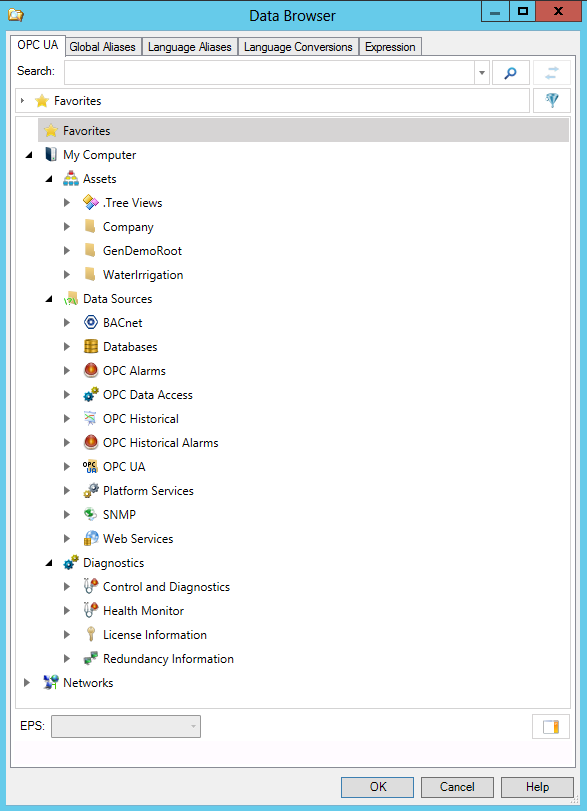|
|
The features on this page require a GENESIS64 Advanced license and are not available with GENESIS64 Basic SCADA . |
|
|
The features on this page require a GENESIS64 Advanced license and are not available with GENESIS64 Basic SCADA . |
The OPC UA address space is a complex mesh of objects and relationships. In order to accommodate older and often proprietary OPC solutions from multiple vendors, the OPC UA address space can be organized hierarchically or into a heterarchy. A hierarchy is a structured tree branch topology where rules governing relationships and inheritance are stated and observed. In a heterarchy, the relationships between objects are organized with overlapping definitions, often with multiple relationships, and where the network of objects does not necessarily conform to a structured or ordered form.
A hierarchy and a heterarchy are not mutually exclusive, although the address spaces for each may require additional features in order for the relationships and positions to be specified and understood. Hypertext Web connections, peer to peer systems, and mesh or grid networks are often given as examples of heterarchies; but each can contain ordered structure (along with the free form disorder). For example, a Web address may specify that an object is contained within another object (physical locations of files, for example) while one object such as a button defined in an HTML page can point to any other page in hyperspace. The vendor supporting OPC UA provides the necessary mapping function that allows a user to communicate with objects in their namespace using the OPC UA protocol. OPC UA provides the means to communicate to older versions of the OPC specifications.
This need to accommodate different types of address spaces means that navigating through the OPC UA address space can be complicated, and requires different type of views in order to be understood. When you are programming a Web site inside a design tool, you see views for files, link topology, structured code and other features.
OPC UA Tab in the Data Browser

See also: